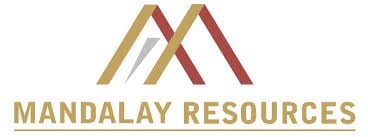Project title: Evaporation Study – Brine Management
Industry partner: Mandalay Resources operates a gold and antimony mine located in Costerfield, Central Victoria. The operation is spread across two sites. Augusta is the underground site and the processing plant is named Brunswick. The mine’s final product is a concentrate containing approximately 50% antimony and 80 grams per tonne gold. The concentrate is sent to China for processing where the antimony is ultimately used as a fire retardant in plastics and other synthetic materials. Historically antimony was mainly used as an alloying element in the production of munitions. There is currently a workforce of approximately 200 people engaged at the Costerfield mine site. An exploration team is currently working to secure the future of mining at Costerfield.
Project background:
Brine is the high saline wastewater (by-product) which is produced during the process of reverse osmosis. The current Reverse Osmosis (RO) plant has approximately 76% permeate recovery and the rest approximately 24% is brine stream or wastewater, with total dissolved solids (TDS), TDS 15g/L as NaCl. The brine produced at the Costerfield site is either pumped into evaporation dams or reused on-site in the milling process. Salt accumulated within the evaporation dams will be then time to time disposed to landfills.
This project could look into various options of brine management including (1) modelling of existing and new evaporation dams by GoldSim software to find better surface area and depth of the dams (2) evaluation of various thermal brine processing technologies such as Brine Concentrators, Brine Evaporators, (3) Increase RO permeate recovery to 96% then brine stream will be reduced to 3-4% only. The last option is required a significant investment into improved RO systems, 3 stages as a minimum.
Are there other ways the brine can be used and also recover metals? To reduce brine volume the following options could be studied:
- Increase permeate recovery by RO plant to 96% in this way brine stream will be reduced by 4% only and less dams will be required to manage brine volume.
- Brine additional treatment to zero discharge technology like a brine evaporator and brine concentrators?
- Aquifer recharge of brine concentrate
- Are there alternative uses for the brine on site at Costerfield, eg generating heat energy?
- Zero discharge of brine- what technology (non-man operated systems) can be used on site?
- Improved brine metals recovery
- Speed-up evaporation within the evaporation dams by adding colouring addictive to brine at Splitter Creek
- Model evaporation dams surface are, depth, concentrations taking into considerations a local temperature and wind that salinity gradient increased with taking account of evaporation rates, colouring water, surface temperature and seasonal weather variations (many scenarios and sub-scenarios could be considered).
Project deliverable:
| Deliverable | Description | Initial Timing Estimate |
| Project plan | Project Plan and Site Visit | TBA |
| Milestone 1 | Literature and data review, reverse osmosis and brine concentration technology evaluation, report | TBA |
| Milestone 2 | Develop groundwater specifications, modelling of aquifer discharge, brine precipitation, risk assessment matrix | TBA |
| Milestone 3 | · Consolidate list of evaporation technologies, develop sustainability criteria to evaluate the various selected evaporation technologies, prepare report, model, drawings and calculations | TBA |
| Draft project report | · Modelling evaporation of various salinity concentration brine streams, define optimal surface of evaporation dams to reduce footprint, and reduce environmental impacts. | TBA |
| Stakeholder engagement | · Submit the draft reports for feedback from Mandalay Resources. | TBA |
| Final Report | Project report with accompanying presentation materials (eg. Modelling results and reports, model, drawings) | TBA |
Students:
- 06 students (environmental engineering, sustainable systems, engineering management, environmental science)

